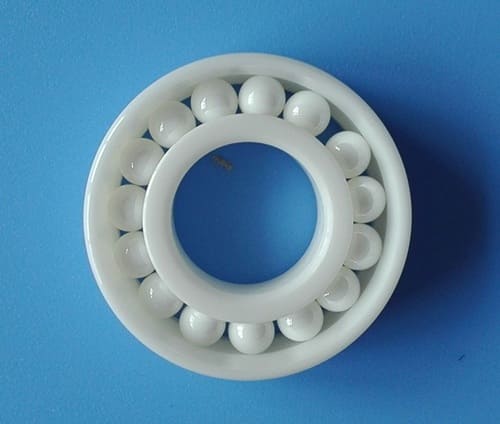Zirconia Ceramic Balls: Why They Are Ideal for Bearing
Overview
Zirconia balls are an advanced ceramic material known for their superior mechanical properties. These balls are commonly used in bearings due to their excellent durability, wear resistance, and low friction characteristics. Zirconia, with its high toughness and resistance to corrosion, ensures a long lifespan and reliable performance in demanding applications, making it a popular choice across various industries, including automotive, aerospace, and medical.
When it comes to bearings, selecting the right material is crucial. The material directly influences the bearing’s efficiency, lifespan, and overall performance. Zirconia balls offer significant advantages over traditional materials like steel, especially in environments that require high precision, durability, and resistance to harsh conditions. Choosing the right material, like zirconia, can lead to smoother operation, reduced maintenance, and ultimately, cost savings for industries relying on precision machinery.
At Advanced Ceramics Hub, we specialize in high-quality zirconia ceramic balls, ensuring optimal performance for industrial and scientific applications.

What are Ceramic Balls?
Ceramic balls are spherical rolling elements made from advanced ceramic materials, processed through high-temperature sintering and machining to achieve exceptional mechanical properties. They are widely used in mechanical systems that require durability and precision, such as bearings, grinding media, and valve components. Common ceramic materials include zirconia, alumina, silicon nitride, and silicon carbide. Let’s take a closer look at the specific advantages of these materials.
Zirconia Ceramic Ball
- High Toughness: Excellent crack resistance and impact resistance.
- Strong Wear Resistance: Performs well in high-load and high-speed applications.
- High Temperature Stability: Can withstand high-temperature environments.
- Excellent Corrosion Resistance: Maintains stability in a wide range of chemical environments.
- High Hardness: Offers high mechanical strength and wear resistance.
- High-Temperature Resistance: Suitable for high-temperature environments with good thermal stability.
- Good Electrical Insulation: Ideal for electrical insulation applications.
- Cost-Effective: Alumina is relatively economical compared to other ceramic materials.
- Ultra-High Toughness: Exhibits higher fracture toughness than many other ceramics.
- Thermal Shock Resistance: Can withstand rapid temperature changes without cracking.
- Chemical Corrosion Resistance: Stable in acids, bases, and other chemicals.
- Exceptional Oxidation Resistance: Exhibits excellent resistance to oxidation at high temperatures.
- Extreme Hardness: Among the hardest of all ceramic materials.
- Excellent Thermal Conductivity: Effectively dissipates heat, maintaining stable temperatures.
- Strong Wear Resistance: Performs excellently in abrasive environments.
- High-Temperature Oxidation Resistance: Maintains stability in extremely high temperatures.
Looking for top-quality ceramic balls? Explore Advanced Ceramics Hub’s Selection.
Performance of Ceramic Balls
| Property | Zirconia (ZrO₂) | Alumina (Al₂O₃) | Silicon Nitride (Si₃N₄) | Silicon Carbide (SiC) |
| Hardness (Vickers) | 1200 – 1500 HV | 1500 – 2000 HV | 1700 – 2000 HV | 2500 – 3000 HV |
| Density (g/cm³) | 6.0 – 6.1 g/cm³ | 3.6 – 3.9 g/cm³ | 3.2 – 3.3 g/cm³ | 3.1 – 3.2 g/cm³ |
| Fracture Toughness (MPa·m¹/²) | 7 – 10 MPa·m¹/² | 3 – 4 MPa·m¹/² | 6 – 7 MPa·m¹/² | 4 – 5 MPa·m¹/² |
| Compressive Strength (MPa) | 2000 – 3000 MPa | 2500 – 3000 MPa | 2500 – 3000 MPa | 3000 – 4000 MPa |
| Thermal Conductivity (W/m·K) | 2.0 – 3.0 W/m·K | 20 – 30 W/m·K | 30 – 40 W/m·K | 120 – 150 W/m·K |
| Max Operating Temperature (°C) | 1200 – 1400°C | 1500 – 1800°C | 1300 – 1400°C | 1600 – 1800°C |
| Electrical Insulation | Excellent | Good | Poor | Poor |
| Wear Resistance | Excellent | Good | Very good | Excellent |
What are Zirconia Ceramic Balls?
Zirconia ceramic balls are made from zirconium dioxide (ZrO₂), a material known for its exceptional mechanical properties and high resistance to wear and corrosion. These balls are often used in applications where high performance is required, such as in bearings, due to their unique combination of characteristics. Zirconia ceramics exhibit high hardness, with a Vickers hardness ranging from 1200 to 1500 HV, making them highly resistant to scratching and wear. Additionally, they have excellent fracture toughness, allowing them to withstand heavy loads and impact without breaking. Their low thermal conductivity ensures stable performance even under extreme temperatures, and their high density provides smooth and precise motion in bearing systems. The electrical insulating properties of zirconia also make it suitable for use in electric and electronic applications. These qualities make zirconia ceramic balls ideal for high-speed, high-precision bearings and other demanding mechanical systems.
Key Benefits of Zirconia Ceramic Balls in Bearings
Specific Types of Bearings that Benefit from Zirconia Ceramic Balls:
| Type of Bearing | Benefits of Zirconia Balls | Applications |
| High-Speed Bearings | Low friction coefficient reduces energy losses, allowing smooth, stable operation at high RPM. | Motors, turbines, and other high-speed machinery. |
| High-Load Bearings | Excellent hardness and resistance to wear under stress, ideal for heavy machinery and high-performance motors. | Heavy machinery, high-performance motors, and industrial equipment. |
| High-Temperature Bearings | Can withstand high temperatures without degrading, making them suitable for extreme environments. | Aerospace, automotive, and other high-temperature applications. |
| Precision Bearings | Requires minimal tolerance and high accuracy, making them perfect for precision applications. | Medical devices, robotics, and high-end machinery. |
| Corrosion-Resistant Bearings | Resistance to corrosion makes them ideal for harsh chemical and moisture environments. | Chemical processing, marine environments, and other corrosive settings. |
Applications of Zirconia Ceramic Balls in Bearings
Common Industries where Zirconia Ceramic Balls are Used:
Comparison with Other Bearing Materials: Zirconia vs. Steel Balls
Zirconia balls offer better performance in high-load, high-speed, corrosive, and high-temperature environments. Though they come with a higher upfront cost, their durability and efficiency make them more cost-effective in the long run. Steel balls, while cheaper initially, may incur higher maintenance costs and reduced lifespan in demanding conditions.
| Property | Zirconia Balls | Steel Balls |
| Hardness & Durability | Higher hardness, more wear-resistant, longer lifespan. | Prone to wear and deformation under stress, shorter lifespan. |
| Corrosion Resistance | Excellent corrosion resistance, resistant to many chemicals. | Susceptible to corrosion, especially in moist or chemical environments. |
| Thermal Stability | High thermal stability, can withstand extreme temperatures. | Higher friction coefficient, more prone to wear, and reducing efficiency. |
| Weight | Lighter than steel, beneficial for lightweight applications. | Heavier, which may not be ideal for lightweight applications. |
| Friction & Wear Resistance | Lower friction coefficient, less wear, and improved efficiency. | Higher friction coefficient, more prone to wear, and reduces efficiency. |
| Cost | Higher initial cost, but longer lifespan and lower maintenance cost. | Lower initial cost, but higher maintenance costs over time. |
Challenges and Limitations of Zirconia Ceramic Balls in Bearings
Zirconia ceramic balls in bearings offer superior performance, especially in demanding environments, but they come with a higher initial cost, potential fragility, and manufacturing complexity. The decision to use zirconia balls should be based on a careful cost-benefit analysis, considering the specific application, long-term durability, and performance requirements.
Zirconia ceramic balls provide a range of advantages, including excellent wear and corrosion resistance, high temperature stability, and low friction, making them ideal for a wide array of demanding bearing applications. As manufacturing technologies improve and industries demand higher-performance materials, zirconia balls are poised to play an even more significant role in bearing technology in the future. Their potential for use in advanced, eco-friendly, and high-speed applications positions them as a critical material for next-generation bearing systems.
